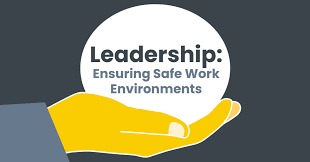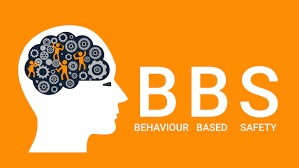We conduct Various EHS Training program as per Customer requirements.
By incorporating Behavior-Based Safety into the training program, participants will learn to recognize and address unsafe behaviors, contribute to a safer work environment, and support the overall goal of reducing incidents and injuries through proactive behavior management.
EHS Leadership for Construction Project Management Staff / Engineers / Supervisors
This training focuses on equipping construction project management staff with the necessary knowledge and skills to lead and manage Environmental, Health, and Safety (EHS) programs effectively.

Duration: Half day / Full Day
Key components include
- EHS Principles and Practices: Understanding fundamental EHS principles, regulations, and best practices.
- Leadership and Communication: Techniques for effective leadership and communication in promoting EHS culture.
- Risk Management: Identifying, assessing, and mitigating risks specific to construction projects.
- BBS : What is Behavior Based Safety. What are the benefits and how to introduce BBS at site in simple ways. How to drive your mind for accident reduction.
- Root Cause Technique /Incident Management: Procedures for responding to and managing EHS incidents.
- Mind Management: How to drive your mind for accident reduction process.
- Continuous Improvement: Strategies for continuous improvement in EHS performance.
EHS for Newly Joined Engineers
This training aims to introduce newly joined engineers to the critical aspects of Environmental, Health, and Safety in the construction industry. Key components include

Duration: Half day
Key components include
- EHS Regulations and Compliance: Overview of relevant EHS regulations and compliance requirements.
- Hazard Identification: Identifying potential hazards in the construction environment.
- Safe Work Practices: Implementing safe work practices to prevent accidents and injuries.
- Emergency Response: Understanding emergency response procedures and protocols.
- EHS Culture: Promoting a culture of safety and environmental responsibility from the start of their careers.
Risk Analysis and Its Mitigation for Engineers
This training provides engineers with the tools and techniques to analyze risks and implement effective mitigation strategies.

Duration: Half day
Key components include
- Risk Assessment Techniques: Various methods for conducting risk assessments, including qualitative and quantitative approaches.
- Hazard Analysis: Techniques for identifying and analyzing hazards in engineering projects.
- Control Measures: Developing and implementing control measures to mitigate identified risks.
- Monitoring and Review: Monitoring the effectiveness of risk control measures and making necessary adjustments.
- Case Studies: Analyzing real-world case studies to understand practical applications of risk analysis and mitigation.
Safety During Work at Height
This training focuses on the specific safety requirements and best practices for working at height, which is one of the most hazardous activities in construction.

Duration: Half day
Key components include
- Regulatory Requirements: Understanding the legal requirements and standards for working at height.
- Risk Assessment: Conducting risk assessments for tasks involving work at height.
- Fall Prevention: Techniques and equipment for preventing falls, including guardrails, safety nets, and personal fall arrest systems.
- Safe Use of Equipment: Proper use and maintenance of ladders, scaffolding, and other equipment used for working at height.
- Emergency Procedures: Planning and executing emergency rescue procedures for incidents involving work at height.
- Training and Competency: Ensuring that workers are properly trained and competent to perform tasks at height safely.
Incident Investigation
This training focuses on the specific safety requirements and best practices for working at height, which is one of the most hazardous activities in construction.

Duration :Full Day
- Definition & Purpose:
- What is the incident investigation & why it is required.
- The goal of preventing recurrence, not assigning blame.
- Immediate Response:
- Information Gathering:
- Interview techniques.
- Collection of evidence / documents (maintenance logs, training records, SOPs).
- Review of environmental conditions (lighting, weather, noise).
- Root Cause Analysis:
- Use of Various Investigation tools.
- Legal compliance – Indian & ILO Requirements.
- Corrective Actions:
- Development of short-term measures to immediately reduce hazards.
- Implementation of long-term solutions (improved training, revised procedures, engineering controls).
- Assign of responsibilities and timelines for corrective measures.
- Documentation & Reporting
- Follow-Up & Continuous Improvement
- Verify that corrective actions are implemented and effective.
- Monitor trends to prevent similar incidents.
- building of safe work environment.
Behavior-Based Safety (BBS) Training
This training focuses on improving safety performance by influencing and changing individual behaviors within the workplace. The goal is to create a proactive safety culture where employees take responsibility for their own safety and the safety of their colleagues.

Duration : Full Day
Key components include
- Introduction to Behavior-Based Safety: Understanding the principles and philosophy of BBS. The impact of human behavior on safety performance. The relationship between behavior, attitude, and safety outcomes.
- Identifying Unsafe Behaviors: Techniques for observing and identifying unsafe behaviors in the workplace.
- Implementing BBS Programs: Steps to develop and implement an effective BBS program. Engaging employees at all levels to participate in BBS initiatives.
- Behavioral Interventions: Techniques for intervening and correcting unsafe behaviors. Positive reinforcement and its role in encouraging safe behaviors. The importance of immediate feedback and coaching.
- Measuring and Analyzing BBS Data: Methods for collecting and analyzing data on observed behaviors. Using data to identify trends and areas for improvement.
- Building a Safety Culture: Strategies for fostering a culture of safety within the organization. The role of leadership in promoting and sustaining BBS.